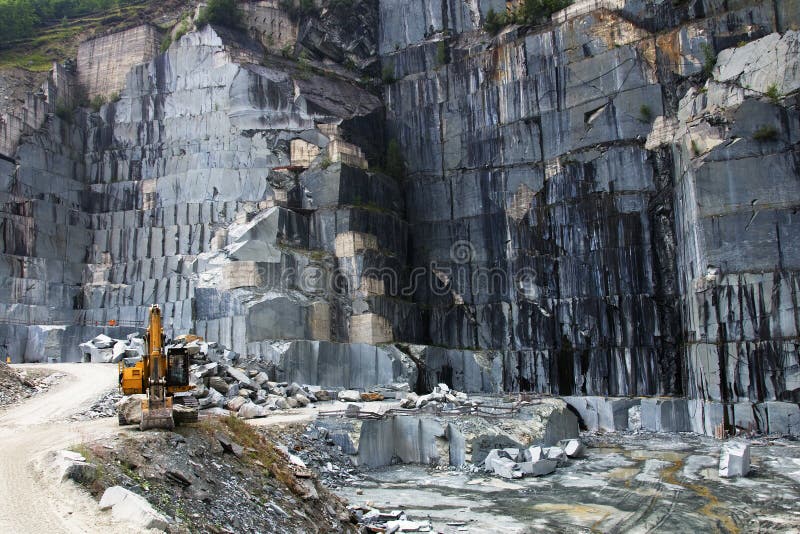Uncovering the Rich History and Lasting Practices of Granite Quarrying
As we base on the precipice of revealing the complex tapestry of granite quarrying, a trip through time discloses not just the physical act of drawing out rock but likewise the social and historical importance woven right into the very material of this technique. From the ancient beginnings that laid the structure for modern quarrying methods to the lasting techniques that are shaping the future of this market, each carve mark on granite surface areas tells a story waiting to be discovered (granite quarries in south africa). The heritage of granite quarrying stretches far beyond simple removal; it is a testimony to human ingenuity, durability, and the enduring appeal of this majestic stone
Ancient Beginnings of Granite Quarrying
Going back to ancient human beings, the practice of quarrying granite has been an indispensable component of human background and building development. The earliest proof of granite quarrying go back to old Egypt, where massive pyramids and elaborate sculptures were crafted from this resilient stone. The Egyptians utilized primitive tools to remove granite blocks from quarries, showcasing the importance of this material in their monumental constructions.
Progressing in history, the Greeks likewise made considerable contributions to the quarrying of granite. The Greeks used granite in various architectural marvels, such as holy places and statues, demonstrating their skill in shaping and carving this hardy rock. The Romans better improved the strategies of quarrying granite, using sophisticated devices like blades and hammers to extract and shape granite for their iconic frameworks.
Via the centuries, the technique of quarrying granite has developed, with modern technologies boosting performance while preserving the ageless appeal of this all-natural rock - granite quarries in south africa. From ancient civilizations to modern building contractors, the heritage of granite quarrying continues to form our world
Evolution of Quarrying Strategies
The advancement of quarrying methods has been noted by a constant progression in the direction of higher efficiency and accuracy in drawing out granite. From the basic methods used by our ancestors to the innovative innovations utilized in modern-day quarrying operations, the sector has undergone considerable developments. Early quarrying strategies included manual work with fundamental devices such as blades, hammers, and wedges to remove granite blocks from the earth. As civilizations advanced, strategies like fire-setting and primitive dynamites were presented to help with the removal procedure.
Developments in computer-controlled equipment and 3D modeling have optimized quarrying operations, leading to minimal ecological influence and boosted sustainability techniques. As the need for granite proceeds to increase, the evolution of quarrying techniques remains integral to conference sector requires effectively and sustainably.
Cultural Significance of Granite
Granite holds a profound social importance throughout different civilizations due to its long-lasting presence in building masterpieces and prized monuments. The social importance of granite expands beyond its physical features; it symbolizes strength, stability, and eternity, making it a symbol of withstanding heritages and customs.

Sustainable Practices in Quarrying
Amidst the abundant history of granite quarrying and its social relevance lies an expanding emphasis on sustainable techniques within the industry. As ecological understanding and concerns concerning resource deficiency have heightened around the world, the quarrying market has significantly embraced lasting techniques to decrease its effect on the environment and bordering communities.

Furthermore, recovery and recovery of quarry websites post-extraction are important to lasting methods. By bring back quarried areas to a natural or advantageous state, such as creating wild animals environments or leisure areas, quarriers can balance out the environmental impact of their procedures and contribute positively to the local ecological community.
Heritage of Granite Quarrying
With a historic backdrop steeped in workmanship and commercial progress, what enduring influence has granite quarrying news left on the landscape of contemporary society? The heritage of granite quarrying goes beyond mere removal practices; it has shaped building marvels, urban landscapes, and social heritage worldwide. The sturdy nature of granite has made it a preferred selection for monoliths, buildings, and infrastructure, standing as a testimony to the skill and artistry of quarry employees across generations.
In addition, the financial footprint of granite quarrying can not be forgotten. The market proceeds to supply employment possibilities and drive regional economies in areas where granite extraction is widespread. It has additionally spurred technical developments in quarrying strategies and devices, leading to a lot more check that efficient and lasting techniques.
In regards to sustainability, the heritage of granite quarrying includes efforts to alleviate ecological impacts with recovery projects and accountable source monitoring. By balancing economic rate of interests with ecological stewardship, the sector strives to guarantee that future generations can remain to gain from this long-lasting natural deposit.
Conclusion

Comments on “Granite Quarries in South Africa Wonders: Exploring the Quarry Landscape”